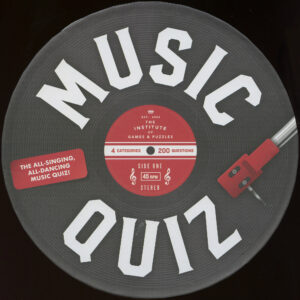People even marginally familiar with rock know that 1970 was an important year — and one that ended tragically.
It seems almost operatic: On one hand is a year in which there was an amazing outpouring of artistic creativity. On the other were three events — the breakup of The Beatles and the deaths of Jimi Hendrix and Janis Joplin — that symbolize the loss of innocence and more or less guaranteed that the genre had reached heights that it could never recapture.
Though The Beatles were bowing out, the band and its individual members had a heavy presence. “Let It Be” — recorded before but held until after “Abbey Road” — was released. So was Paul’s eponymous album, “John Lennon/Plastic Ono Band” and George’s “All Things Must Pass” (which alone makes it an important year).
In addition to the transition to the post Beatles era, The Jimi Hendrix Experience was no longer. Hendrix released the live “Band of Gypsys” — recorded at The Fillmore East in New York City — with his new group of that name. Wikipedia says it was recorded on January 1, 1970. I believe that the band played two nights. Perhaps I am mistaken, Wikipedia got one wrong or they did play two nights — but only used the January 1 recording.
An Amazing Year
The year had a decades-worth of important albums: Crosby Stills Nash and Young (“Déjà Vu”); Neil Young (“After the Gold Rush”); Bob Dylan (“New Morning” and “Self Portrait”); Traffic (“John Barleycorn Must Die”); The Allman Brothers (“Idlewild South”); Joni Mitchell (“Ladies of the Canyon”); Simon and Garfunkel (“Bridge Over Troubled Water”); Credence Clearwater Revival (“Cosmo’s Factory”); Van Morrison (“Moondance”) and James Taylor (“Sweet Baby James”).
Still more: The Kinks (“Lola Versus Powerman and the Moneygoround, Part One”); The Band (“Stage Fright”), The Doors (“Morrison Hotel”), Cat Stevens (“Tea for the Tillerman”); The Grateful Dead (“Workingman’s Dead” and “American Beauty”); Elton John (“Tumbleweed Connection”); Derek and the Dominos (“Layla and Other Assorted Love Songs”); Led Zeppelin (“Led Zeppelin III”); Santana (“Abraxas”), Chicago (“Chicago”); David Bowie (“The Man Who Sold the World”) and Black Sabbath (“Paranoid” and “Black Sabbath”).
There were less remembered — though not necessarily inferior — albums by important groups, such as “Sun Flower” from The Beach Boys and “Loaded” from The Velvet Underground. Other 1970 albums noted by Classic Rock are “Funkadelic” by George Clinton’s band of the same name and Captain Beefheart’s “Lick My Decals Off, Baby,” which I am sure added a touch of class and elegance. Finally, a poignant release was “The Madcap Laughs,” which was Syd Barrett’s first solo album. Barrett, who seemed to be a victim of the age in which he lived, had been fired by Pink Floyd two years earlier.
The End of the Beginning
It was obviously quite a year. Perhaps the convergence of several things can at least partly explain the outpouring: Rock had been around long enough that the artists, producers and recording personnel had taken their crafts to higher levels. At the same time, all of these musicians obviously still were in their highly creative periods. Finally, perhaps the business side of the recording music was lagging a bit and still struggling to align commercial realities with the explosion of creativity. This tension would likely make them more open to giving the musician greater freedom to explore.
The point isn’t that there has not been great rock release since 1970. Of course there has been. The importance of 1970 is the sheer amount of wonderful music and, at a higher level, the clear signs that the generation that nurtured it was coming of age.










